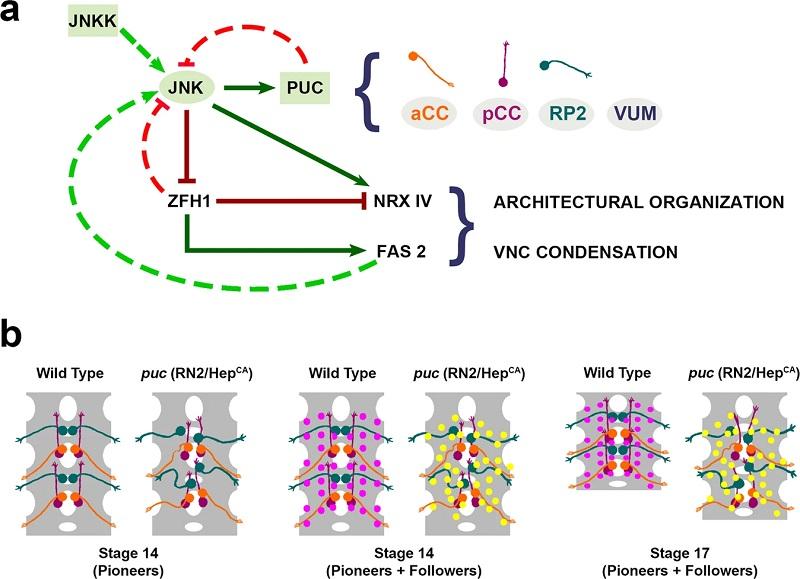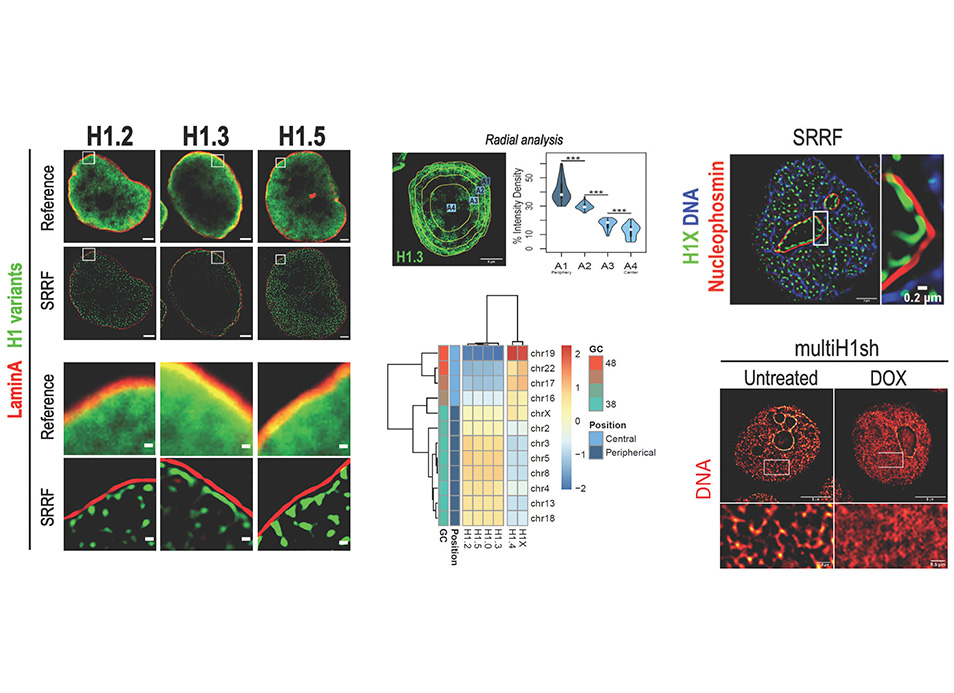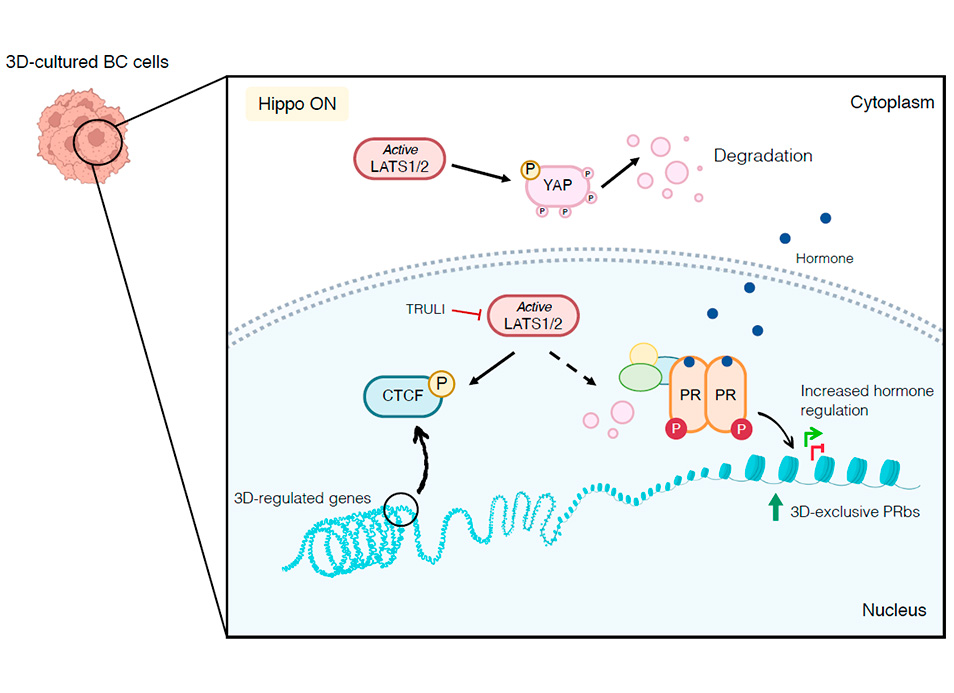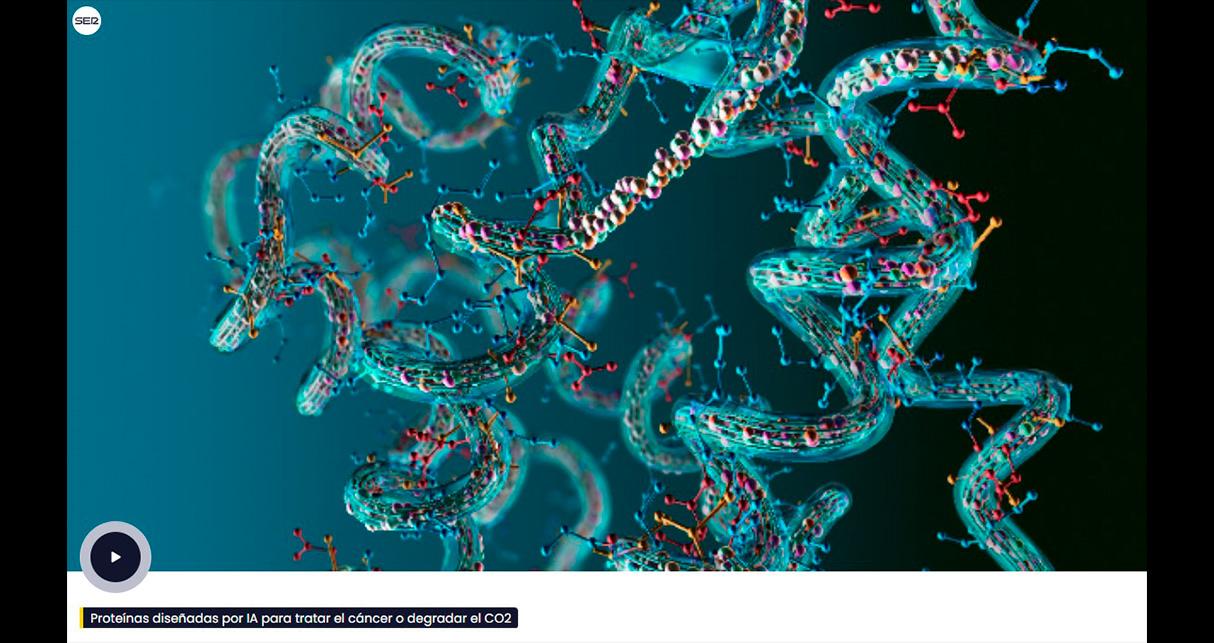New publication in eLife of the Jordan Lab in collaboration with the IBMB Imaging Platform showing that…
JNK signaling in pioneer neurons organizes ventral nerve cord architecture in Drosophila embryos
Abstract
Morphogenesis of the Central Nervous System (CNS) is a complex process that obeys precise architectural rules. Yet, the mechanisms dictating these rules remain unknown. Analyzing morphogenesis of the Drosophila embryo Ventral Nerve Cord (VNC), we observe that a tight control of JNK signaling is essential for attaining the final VNC architecture. JNK signaling in a specific subset of pioneer neurons autonomously regulates the expression of Fasciclin 2 (Fas 2) and Neurexin IV (Nrx IV) adhesion molecules, probably via the transcription factor zfh1. Interfering at any step in this cascade affects fasciculation along pioneer axons, leading to secondary cumulative scaffolding defects during the structural organization of the axonal network. The global disorder of architectural landmarks ultimately influences nervous system condensation. In summary, our data point to JNK signaling in a subset of pioneer neurons as a key element underpinning VNC architecture, revealing critical milestones on the mechanism of control of its structural organization.
Reference:
Karkali, K., Saunders, T.E., Panayotou, G., Martin-Blanco, E. JNK signaling in pioneer neurons organizes ventral nerve cord architecture in Drosophila embryos. Nat Commun 14, 675 (2023). https://doi.org/10.1038/




